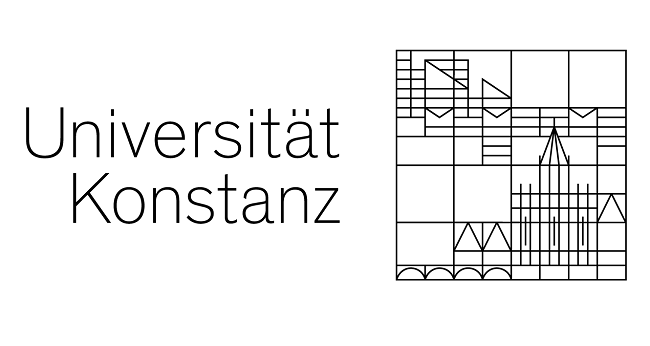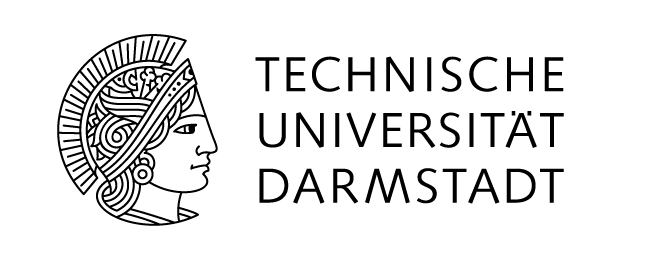Interdisciplinary conference in Constance/Kreuzlingen, June 4th – 5th, 2015
The conference was conceptualized as an open experiment in digital literary studies, according to organiser Thomas Weitin (Constance). All contributions were based on the research of one corpus (86 digitized novels of the Deutscher Novellenschatz). This compilation contains canonical texts, such as Goethe’s Die neue Melusine that opens the collection, as well as numerous pieces that today are part of the „big unread“ of literary history. The publishers Paul Heyse and Hermann Kurz were trying to, on one hand, collect the „preservable“, and, on the other, meet the expectations of the literary mass market. This ambiguity makes the compilation interesting for research in both literary theory and history.
Fotis Jannidis (Würzburg) (Possibilities for gaining insights in literary studies using methods in between close and distant reading) compared the findings from the Novellenschatz with findings from analyzing bigger (novel-)corpora. In order to draw conclusions about the whole „population“ of novellistic literature of the 19th century, the corpus is too small. It is rather an „opportunistic corpus“, that only allows for intrinsic conclusions. The focus of the analyses has to be traced back to the „bias“ of the publisher – the normative guidelines given by Heyse and Kurz, which were negotiated in the letter exchange. Jannidis used methods ranging from stylometry and topic modeling to network analysis thus demonstrating the innovating possibilities of the digital humanities approach and maintaining a strong critical position: „Operationalisations were never as good as today, even though today they are still pretty bad“.
With a detailed reading Ralf Simon (Basel) (Image-topics in scenic dramaturgy) analyzed two novels, Zwei Nächte by Hackländer and Das letzte Recht by Raabe. Based on the concept of iconic narratology he put up the hypothesis that iconology prevails over semantics by the continous transformation of proto-icons. Texts allow their imagery to remain fluid and debatable and the novel is especially bound to imagery due to its narrative framework. In order to find self-referential passages Simon searched the text for passages that mentioned doors and windows. While Hackländer’s „abysmal“ text provides evidence for the hypothesis, Raabe’s novel didn’t match the icono-narratological interpretation. There was no evidence of poetology, the novel lacked self-thematization of iconicity due to a deconstructive shift and negotiation of imagery.
The information scientist from Constance Ulrik Brandes (Patterns of character constellations in the Deutscher Novellenschatz) raised the question of whether novels are different from other narrated texts in their figure constellations. The assumption was based on the article „Grundzüge einer relationalen Dramaturgie“ by André Georgi, who found the core for drama in the binding dilemma. Brandes suggested instable triangle constellations to be a central figure for the novel, noted however, that it is not the initial constellation but its transformation over actions which is crucial for plot development. Rules for data extraction from the corpus have to be set in advance – data science can usually extract any kind of data, but providing good questions is the responsibility of literary scholars.
The medievalist Friedrich Michael Dimpel (Erlangen) used the Novellenschatz-corpus to draw attention to the unsolved problems of narratological annotation (Narratological Tagging of the Novellenschatz-Anthology: example of Victor von Scheffel’s „Hugideo“ and social network analysis). Automated analyses have reached their limits when it comes to narratological tagging. The differences between narrator and figure discourses have to be annotated manually, as Dimpel showed in Scheffel’s „Hugideo“. In order to get processible annotation results, one needs a very elaborated tagset. The annotation rules need to be much more precise than in traditional narrotology a lá Genette and Martinez/Scheffel. A disambiguation of the text comes along with annotation, and therefore the operation is dependent on the interpretation of the user. Annotation cannot be free of subjectivity, however the subjective moment should be situated in the annotation rules – this way the application of those rules becomes intersubjectively comprehensible.
Bent Gebert (Konstanz) (Absorbed „by the storms of time“? Novella and „Märe“-Antologies – observations of a displacement system) analyzed the „publisher-bias“. In the introduction to the Deutscher Novellenschatz the publishers were aiming at a naturalization of decay and loss, when talking about literature „sinking in the storms of time“. They face the process by „planting new novellistic holts“. This description style is continued in the introduction to the Novellenschatzes des Auslandes, a compilation of translated novellas. Mediavistic compilations of novellas and tales from Heyse’s time often let the loss diagnosis appear as a suspicious maneuver, which is interesting as such. Paratexts, such as the incoherent introduction of the Novellenschatz belong to the corpus analysis, yet it is still open for debate how to implement them into quantitative analysis.
A linguistic touch was added by the computer linguists from Constance, Miriam Butt and Christin Schätzle, who conducted research on the genitive as a stylistic mean in the Novellenschatz. The background was the historical change in the usage pattern of case in many languages. The usage of genitive in the German language appears to be decreasing, the new high German uses the case adnominally and only seldomly as an object case. A frequent use of genitive shows a conscious change in the usage pattern which serves as a stylistic mean. Especially the novels of Hermann Kurz and Wilhelm Müller showed a significantly higher usage of genitive in comparison to the average usage of genitive in the corpus. Jeremias Gottheld and Edmund Höfer, on the other hand, had a usage pattern way lower than the average. The findings from the analysis of the complete Novellenschatz-corpus provide evidence for the support of the theory of less frequent genitive usage.
With the presentation of Katja Mellmann (Göttingen) (On building up the temporal structure in the narrative introduction. An study in the framework of a cognitive theory of the „epic“) the conference entered the domain of cognitive literary studies. According to Mellmann’s hypothesis, the epic preterit is rather a marker for the cognitive modus of the epic (the epitive) than a tempus marker: „Narrating in the imperfect tense is conventionalised and doesn’t necessarily mark past events.“ Mellmann looked for evidence in the introductions of 37 novels of the Deutscher Novellenschatz. 27 of the 37 novels do not contain a time-space coordinate system due to their heterodiegetic mode of narration. Four out of ten homodiegetic narrations use a time coordinate explicitly. Therefore, the indefinite time of action dominates the fictional narration. In the cases where the narrative situation relates loosely to the time coordinates, the „epitive“ marker becomes relatively autonomous. The automatization of the analysis is complicated, since forming a sequence for the machine is difficult when the narration starts at different points.
Nicolas Pethes (Cologne) (Thesaurus casuum? Approaching Heyse’s/Kurz’ „Novellenschatz“) emphasized the proximity between case history and the novel. The evidence was given by Sigmund Freud (Anamneses can be read as novels) and André Jolles (The case has a inclination to the novel). Regarding the novels of the Deutscher Novellenschatz Pethes aimed to show how they reflect upon their status as a part of a compilation of cases. The „case“ occurs in thirteen novels en passant, and in another six it constitutes the center of the narration, among others in Widmann’s Katholische Mühle („The case was complicated“) and Riehl’s Jörg Muckenhuber („… the tension around this outrageous case grew day by day“). In the second part of his analysis Pethes questioned the self-reflectional affiliation of the novels to a serial case compilation. His search showed many results for „Sammlung“/„sammeln“ („compilation“/„compile, collect“), „Schatz“ and „Erzählen“ („treasure“, as in Novellenschatz = „novel treasure“, „to narrate“). The inferration from the frequency of signal words to the self-reflexive inclusion of the novels into a serial compilation dispositif was critically reflected.
Thomas Weitin (What’s in the Novellenschatz? Methodological perspectives on a historical compilation) understood the falcon theory expressed in the introduction of the Novellenschatz by Paul Heyse as an operationalizing instruction. The „strong silhouette“ of the novel cognitively echoes the mental representation in the mind of the reader. The required possibility to summarize the story in „a few lines“ is understood as sequencing, the difference between the one and a „thousand others“ as a distinctive distance measure in the time of an emerging literary mass market. The focus of the presentation was on the distance measure and the question of its operationalization with the help of the delta procedure. An argument for said operationalization would be, according to Weitin, the style-oriented volume architecture chosen by Heyse and Kurz, with the novels being grouped according to the „tone“ of each author. With the help of a stylometric network analysis the similarities between different texts were visualized – among each other and in relation to the whole corpus. The result: Heyse, Zschokke and Immermann turned out to have the highest similarity to the corpus and can be therefore understood as the most average.
In the final discussion of the conference the methodological metaphor of scalable reading was debated. Pethes claimed that the transition from close to distant reading is rather a break than a scale, whereas Jannidis and Gebert held on to the scale-metaphor. All participants agreed to continue joint research on the Novellenschatz of the 19th century.
Cornelius Eggert



